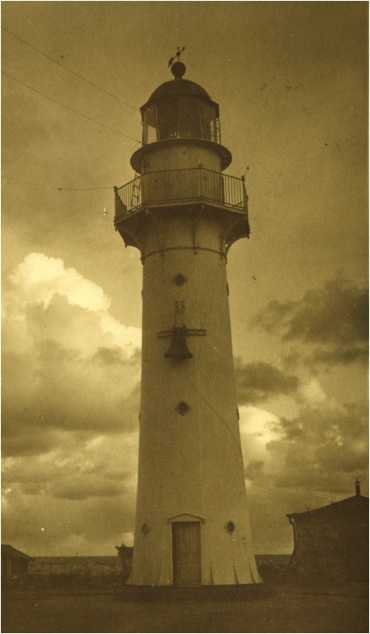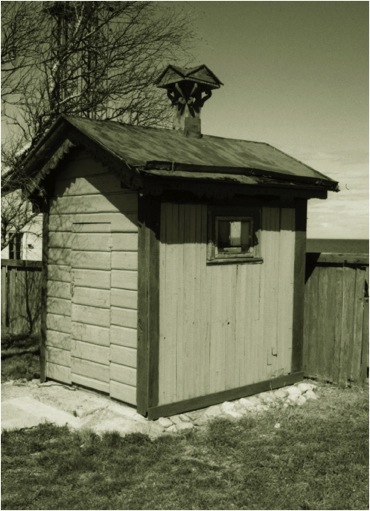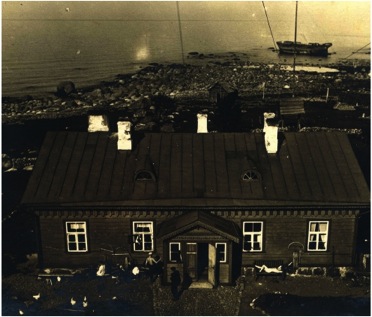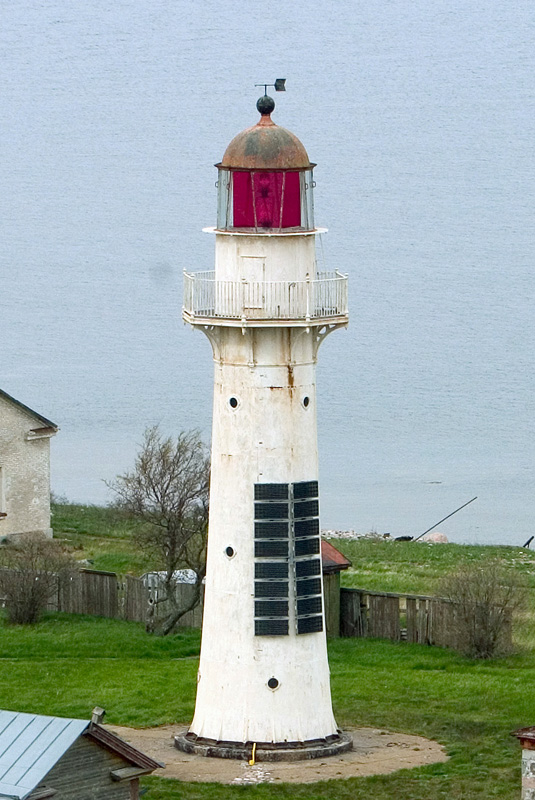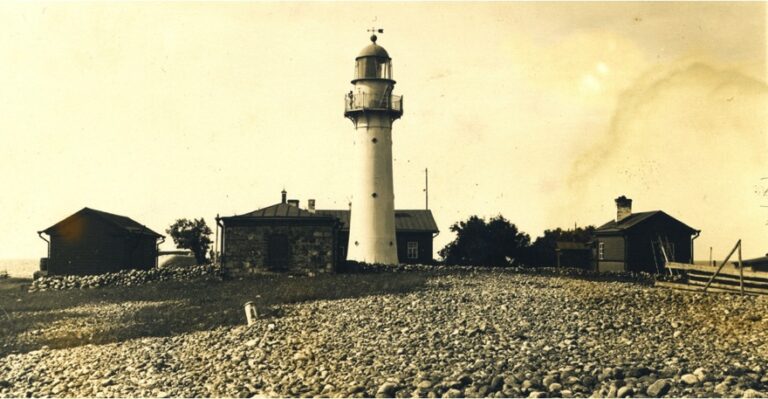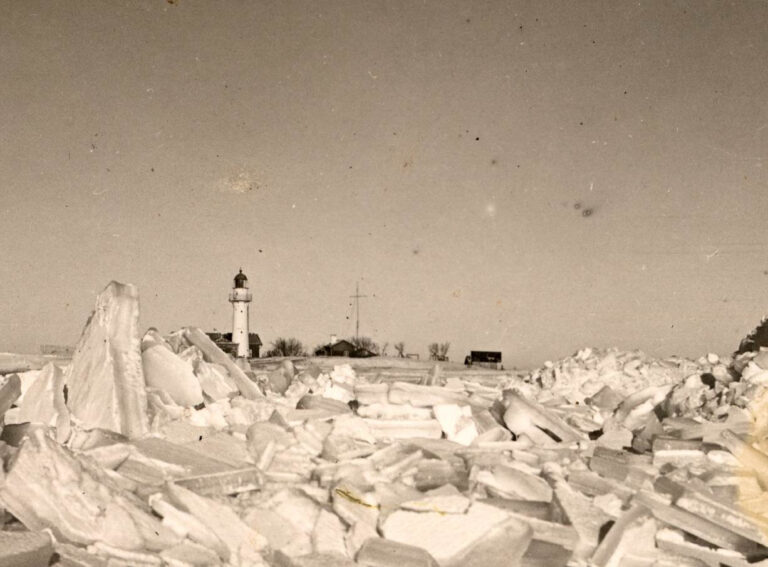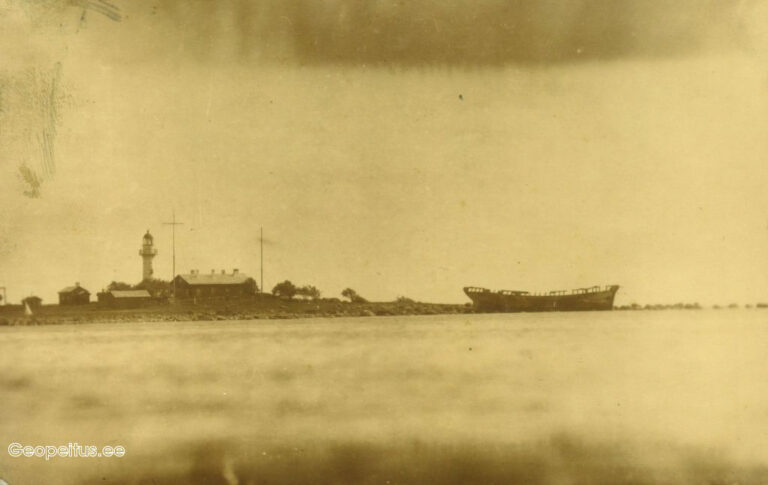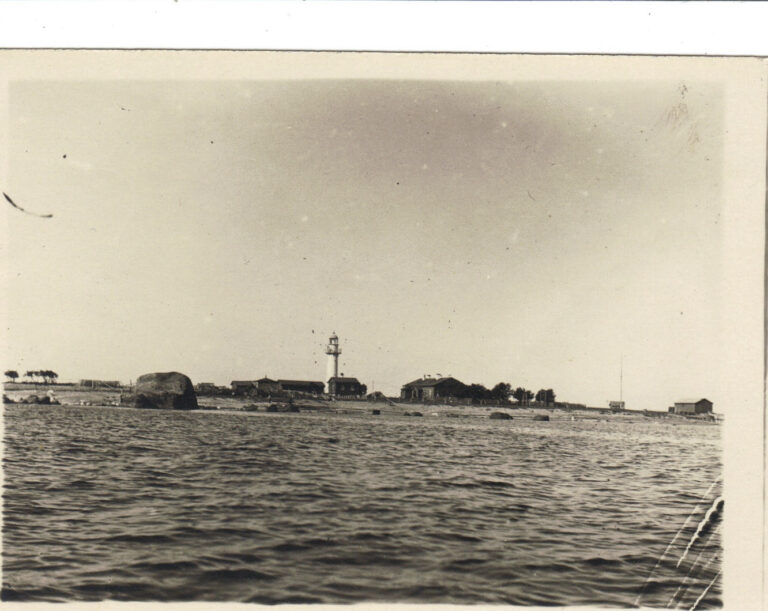The onset of technology and the industrial era in the age of lighthouses is marked by Estonia's first lighthouse, assembled from cast iron plates in the Gordon system. Its current location is on Vaindloo Island, but originally, it stood on Saxby Peninsula at the northwest tip of Vormsi Island.
In 1863, a cast iron lighthouse was ordered from Porter & Co in England for Vormsi Island. The lighthouse's components were transported by sea and assembled on-site. The modern lighthouse was completed in 1864 and began regulating maritime traffic between the Gulf of Finland and the Gulf of Riga.
But not for long. In 1871, the lighthouse was disassembled and moved to Vaindloo Island, strategically located for navigation. This seemingly peculiar action had two reasons – Vaindloo lacked a visible lighthouse from afar, which was desperately needed, and the Vormsi lighthouse, due to growing forests and frequent fogs, was poorly visible from the sea.
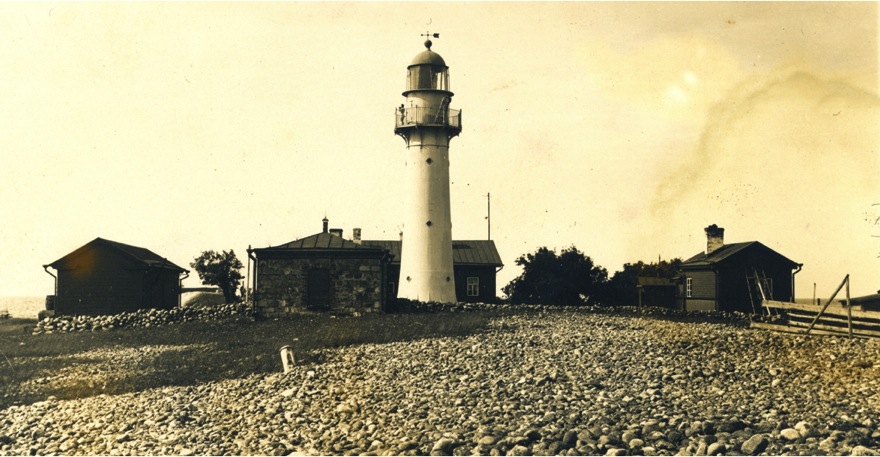
Before the cast iron lighthouse was assembled, there was a wooden pyramid-shaped daymark on Vaindloo Island. However, it was not sufficiently reliable – in 1861, the daymark had collapsed. The blame was placed on coastal dwellers who traveled between Finland and Estonia and had allegedly stolen the metal parts of the tower. In response, in 1870, Vice Admiral S. I. Zelenoi, the director of the Hydrographic Department, ordered the construction of a lighthouse complex on the rocky and empty Vaindloo Island. The construction began with the establishment of outbuildings, culminating in the following year with a 17-meter-tall cast iron lighthouse with a white body, green roof, and lantern room, brought from Vormsi. The lighthouse has stood steadfastly ever since and is recognized as an architectural monument.
A significant number of buildings have been preserved in the lighthouse complex. These include an overseer's residence from the 19th century, a cellar, a granary, a wellhouse, and a kerosene shed. In the latter half of the 20th century, a generator building was added. North of the lighthouse, during the Soviet period, a complex of buildings for the naval communication forces was built, most of which have now been demolished. The service buildings are currently used as a border guard post.
